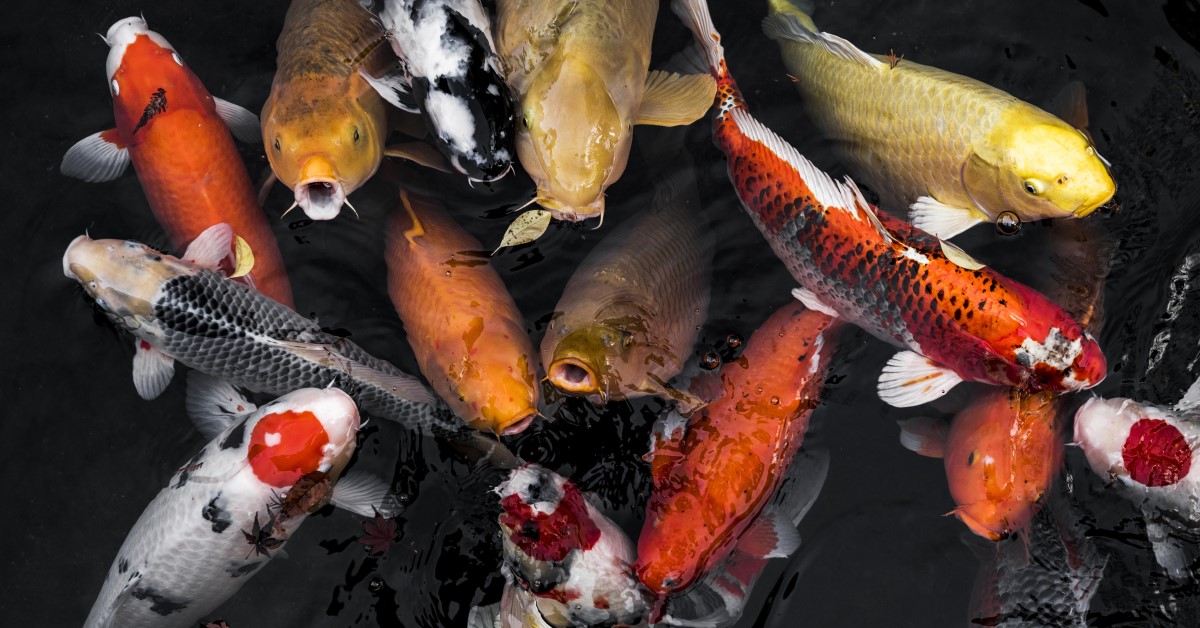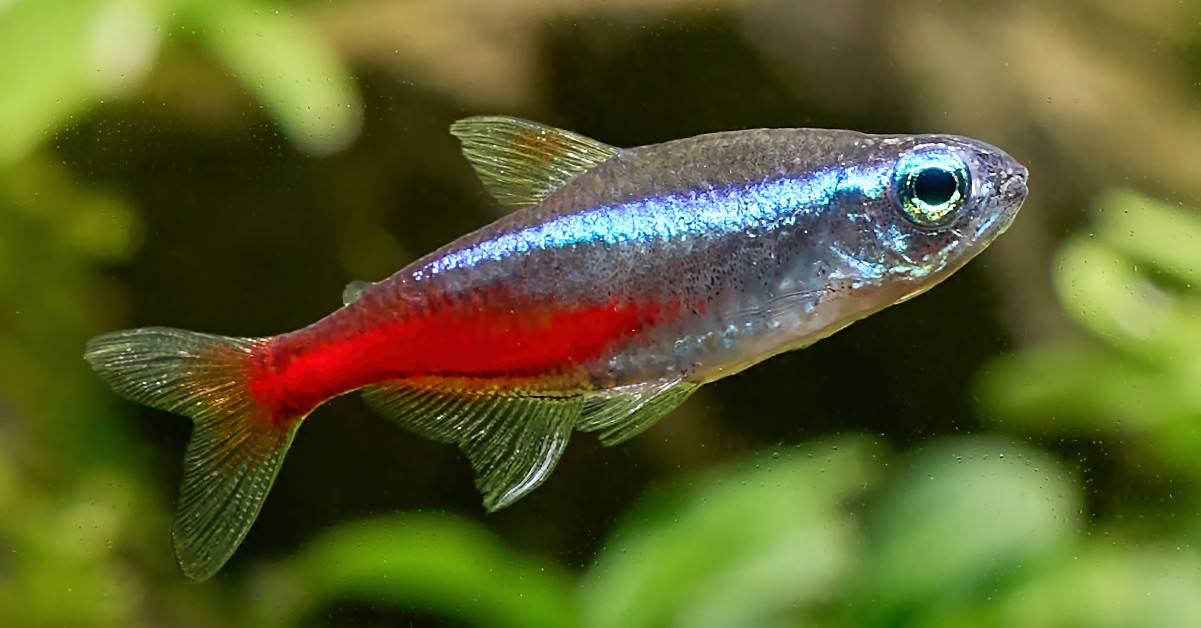Keeping and Caring for Koi Fish
Koi are cold-water fish that can thrive in a variety of habitats, including outdoor koi ponds and aquariums.

Koi fish are known for their vibrant colors, ability to thrive in cool water, and remarkable lifespan of 25 to 35 years. They are commonly kept for decorative purposes in outdoor ponds but can also live in large indoor aquariums. As koi are communal fish, they do not do well on their own and should be kept with at least three in a group. There are more than 100 varieties of koi to choose from in a rainbow of hues. However, koi are not your run-of-the-mill pet store fish. They require unique care to ensure a long and happy life.
How Big Do Koi Fish Get?
Baby koi fish are approximately an inch long and will reach about five inches by six months of age. However, they don’t stay small for long. As they mature, they grow larger until reaching a total length of about three feet.
Koi fish can also get quite heavy with the average weight of an adult koi being 35 pounds. Due to their large size, it’s important that koi have plenty of room to move and swim. For this reason, many people start their koi fish in an aquarium before moving them to an outdoor pond to prevent adversely affecting their growth rate and lifespan.
What Type of Habitat Do Koi Fish Need?
Koi fish can naturally be found in ponds, lakes, and streams with minimal flow and muddy bottoms. They prefer tropical and temperate water with temperatures above 70 degrees Fahrenheit.
If you plan to keep koi fish outdoors, the pond should maintain a temperature between 74 and 86 degrees Fahrenheit year-round. During the winter, it may be necessary to use a heating system to prevent the water from freezing. In addition, the pH level of the pond should be between 6 and 9. The use of crushed limestone in the water can help maintain the proper pH.
When setting up an outdoor pond, include non-invasive plants that will support the natural ecosystem, such as water lilies, water hyacinths, pickerels, cattails, and floating pondweed. Adult koi require approximately 250 gallons of water with a large school of koi fishing needing up to 1,000 gallons or more. The pond should also have a minimum depth of six feet with both a deep area and a shallow area.
Water quality is an important topic when it comes to koi fish care. Ideally, a pond should have a proper filtration and purification system to control water quality and maintain sufficient oxygen levels in the water.
What Do Koi Fish Eat?
Koi fish have a diet that is similar to goldfish. In the wild, they are known for their large appetites. In captivity, they will generally thrive on a combination of seeds, plant material, algae, insects, and zooplankton. While they are omnivores, they do not generally prey on other fish but may eat their eggs. The ideal diet for koi fish is a combination of both natural and commercial foods.
When choosing commercial food for your koi fish, opt for products that are high in protein. Introduce brine shrimp and water fleas into the pond and offer insects and insect larvae that have been purchased from a bait shop or aquarium supplier. The majority of koi fish’s nutrition will come from what they find in the pond. However, you can offer up to three portions of additional pellets each day.
Can Other Species of Fish Live with Koi?
In the wild, koi fish generally live with other species of carp. They can also be found swimming alongside killifish and minnows. Koi can even be found in streams and lakes alongside large game fish, such as bass, perch, and catfish.
Koi are generally very peaceful fish and will not usually harass or prey on other fish in the pond. Goldfish are a common pond mate option as they are similar in appearance and tend to get along well. Grass carp are also great pond mates for koi and offer a natural pruning system for your pond as they like to feast on vegetation.
There are also other fish species that you may want to consider adding to your koi pond, such as sunfish, bass, striped bass, and largemouth bass. Amphibians, such as frogs, also make excellent non-fish pond mates.
Can I Breed Koi Fish?
If you plan to breed your koi fish, you will need a separate pond specifically for mating and spawning. Breeding can be achieved naturally or through artificial methods, such as hormone injections. Koi fish generally reach sexual maturity between the ages of two and five. Natural breeding in koi fish generally occurs in the spring. Keeping the breeding pond temperature between 64 and 72 degrees Fahrenheit can help encourage natural breeding.
Females will lay eggs in the vegetation of the shallow area and the male will then fertilize the eggs. Once fertilized, the koi eggs must be removed and put in an incubation tank where they will hatch in three to four days. Newborn koi fish are quite tiny and may look like zooplankton during the larval stage. After reaching the fry stage, they lose their yolk sacs and will look like scale-less fish. Once the koi reach the juvenile stage, they can be placed back in the pond.
Ready to start saving money on pet wellness care?
Then take a look at Mint Wellness, the pet wellness plan that provides fast reimbursement on routine pet care. Save on vaccinations, wellness exams, preventatives, dental, and more!
Learn More


